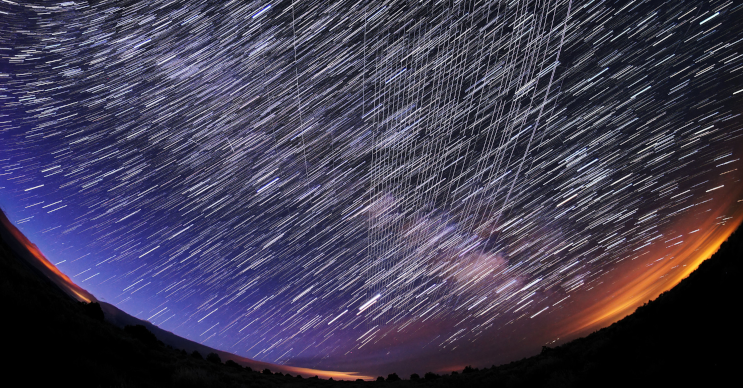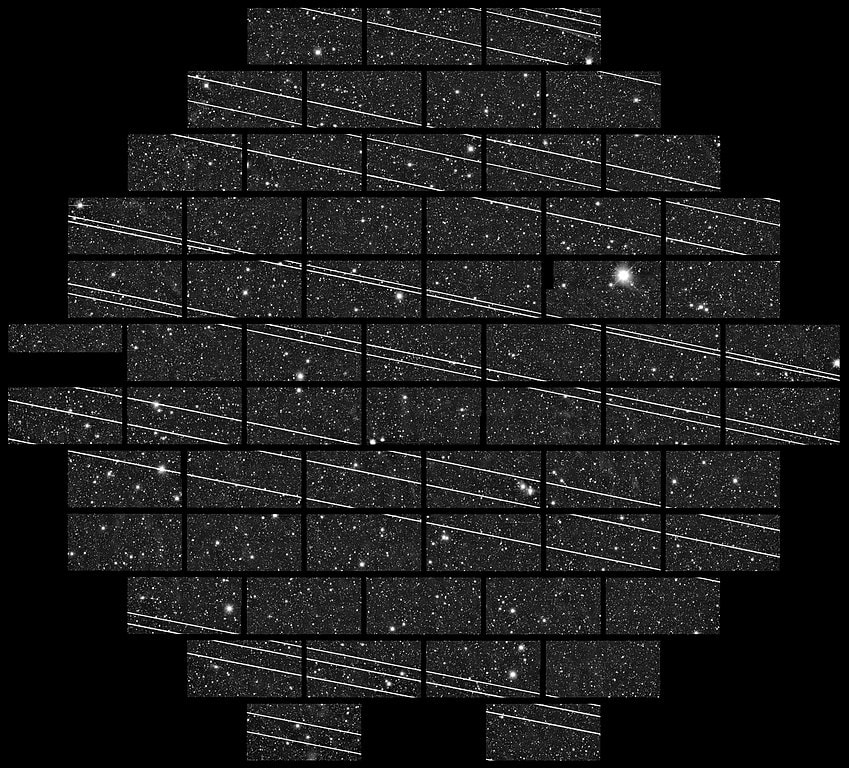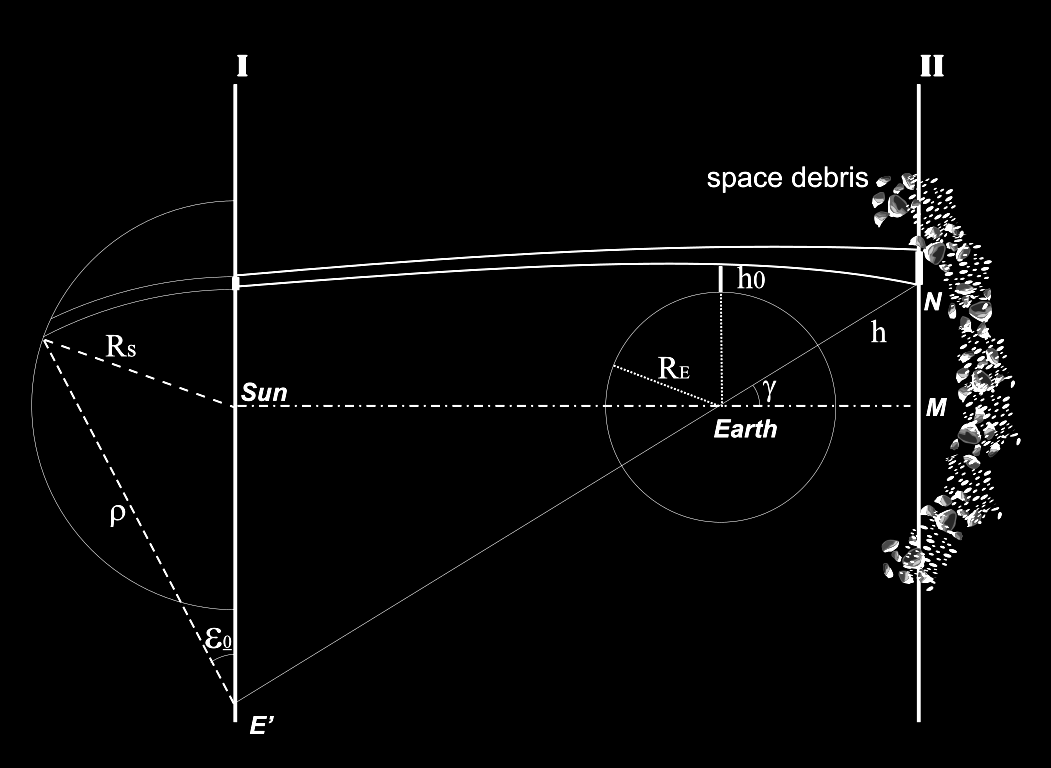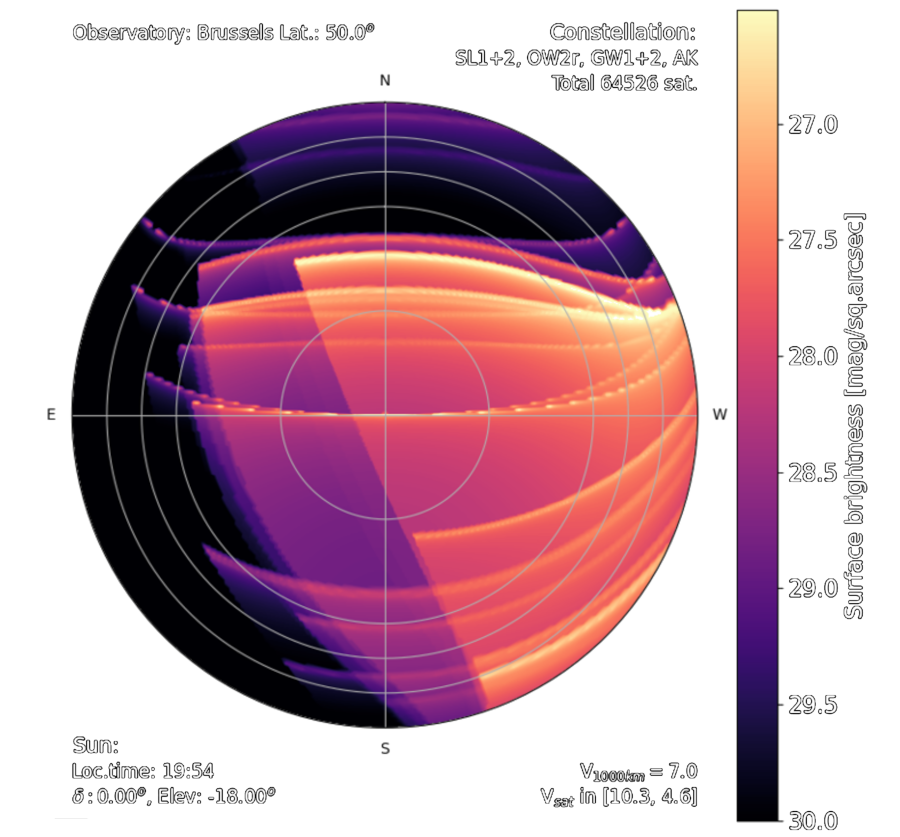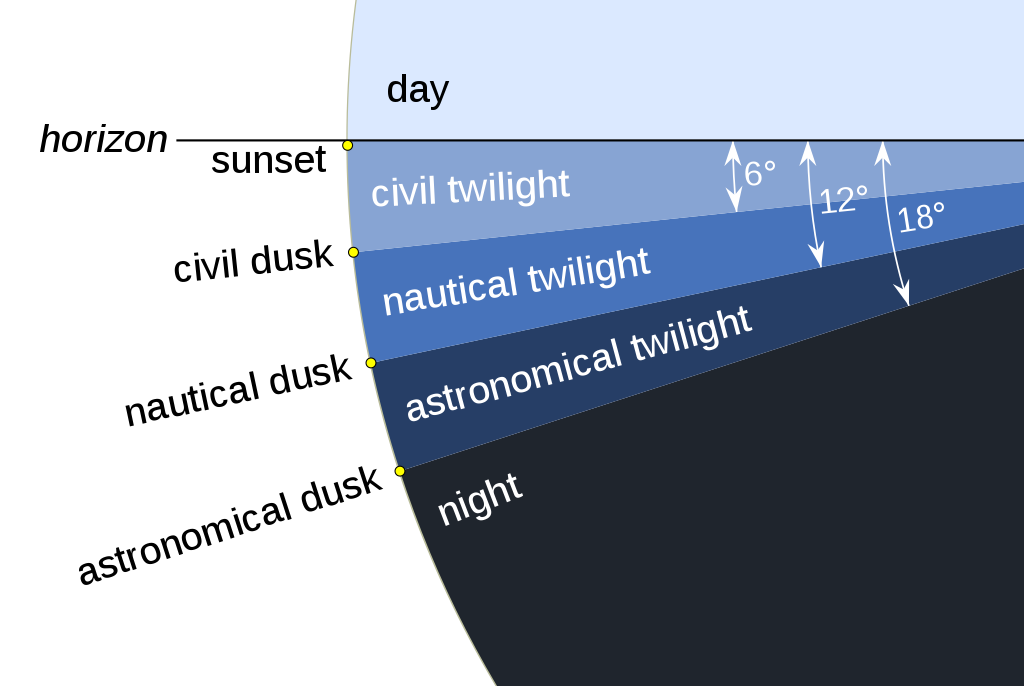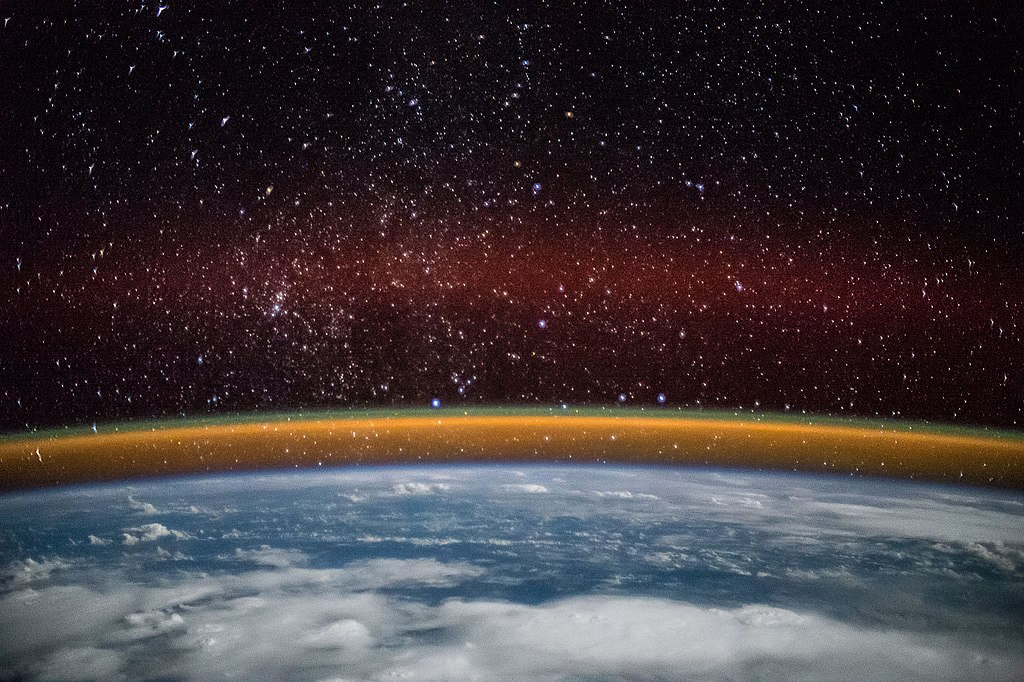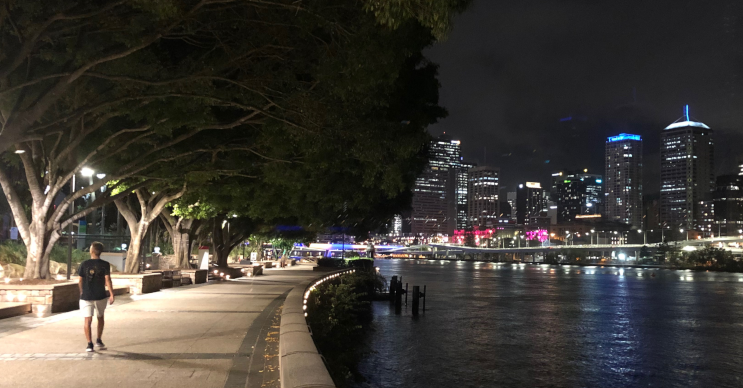Archives
June 2024
Categories
All
|
Back to Blog
Image credit: Mike Lewinski 1112 words / 5-minute read Summary: The orbital space around the Earth is filling up with thousands of new satellites. This is changing the appearance of the night sky, but it still pales in comparison to the effects of ground-based light pollution. In January, we wrote about new research showing that the world at night is lighting up fast. At the same time, something else is happening that may change the nighttime world as much. The orbital region around the Earth is filling up due to increasing activity in the commercial space sector. Thousands of new satellites, and the debris they create, may change the night sky forever. But how significant is the problem, and what can we do about it? Satellites have been around for almost seven decades. For years, countries launched them one at a time for specific purposes. Most satellites served to relay communications across continents at the speed of light. In the 1960s, engineers began to experiment with flying small, coordinated groups of satellites. Called "constellations", these groups performed specific tasks like relaying time signals. This is the basis for modern conveniences like the Global Positioning System, or GPS. By the end of the 2010s there were a few thousand satellites overhead. These ranged in altitude from a few hundred kilometers to about 37,000 kilometers. Those highest satellites, in "geosynchronous" orbits, can dwell indefinitely over any particular place. Their distance, coupled with the speed of light, made for somewhat slow communications. But times were changing. The cost of launching payloads into space was dropping. The uses of orbital space are changingIn 2019, the American company SpaceX launched the first group of satellites representing a new use of outer space. Called "Starlink", the project aimed to provide high-speed Internet to almost every place on Earth. The company plans to deploy up to 35,000 Starlink satellites by the end of the 2020s. Others, following suit, have proposed as many as 393,000 more. These so-called "megaconstellations" are unprecedented in the use of outer space by humans. There are many concerns about how these activities in space will affect our planet. To maintain these large numbers of satellites in orbit, launches will become an almost daily event. Rocket launches produce materials that foul the air and water, and they can damage launch sites. Satellites coming back to Earth will deposit significant amount of metal in the upper atmosphere. And the current best practice in disposing of what returns to Earth is to dump it in the ocean. Little in the way of international law governs these activities. The current legal framework descends from the Outer Space Treaty (OST). Signed in 1967, much of the treaty speaks to the peaceful exploration of space. It prohibits territorial claims on other worlds and the deployment of nuclear weapons in space. And it makes countries liable for damages caused by spacecraft launched from their territories. But the OST does not envision uses of space like satellite megaconstellations. The governance system the OST establishes is slow to act. And countries downplay environmental concerns as they rush to cash in on the megaconstellation phenomenon. All the while, the risks of space debris are growing. Congested orbital space increases the chances of collisions between satellites. The space is also filling with debris shed by satellites and discarded items like used rocket bodies. These objects threaten new collisions and make space more dangerous. Some speculate that the generation of space debris could quickly spiral out of control. Bright streaks from Starlink satellites cross the field of view of the the DECam detectors on the Blanco 4-meter telescope at the Cerro Tololo Inter-American Observatory in this November 2019 image. Image credit: CTIO/NOIRLab/NSF/AURA/DECam DELVE Survey Astronomers grew nervous after the first Starlink launch. Strings of bright objects appeared in the night sky around the world. Reflecting sunlight to the night side of Earth, the satellites began appearing in telescope data. Radio transmissions from satellite to ground interfered with sensitive radio telescopes. The astronomical community organized a series of conferences in 2020-2021 to discuss the problem. They recruited participation from the space industry to find creative solutions to the problem. One result is the establishment of the Centre for the Protection of the Dark and Quiet Sky from Satellite Constellation Interference. More than just bright streaks of lightThere is another way in which these large satellite constellations may affect the night sky. The rules of optics dictate the size of the smallest object that an optical system can resolve. Telescopes on the ground can resolve objects that are a little smaller than a meter in size. Smaller objects are not resolved, but their light still makes it into telescopes (and human eyes) at night. The result is a faint, diffuse glow across the night sky. This raises the brightness of the sky background, much like skyglow from light sources on the ground. In 2021, researchers published a simple model to quantify how much light this contributes to the night sky. They made estimates for conditions before the first Starlink launch in 2019. The results suggested that by that time, satellites and debris ('space objects') raised the sky brightness by 10% above its natural level. A model for night sky brightness due to objects in orbit around the Earth. Light emitted by the Sun (shown as a semi-circle at left) is refracted through the Earth's atmosphere, where it illuminates a belt of objects of a given size distribution (right) above the planet. The model sums up the diffuse light contributions from all the objects visible from the observer's location. Figure 1 in Kocifaj et al. (2021). As the night sky gets brighter, it becomes difficult to see cosmic light from beyond. Raising the background level lowers the contrast between the sky and objects like stars and galaxies. For casual stargazers, it means seeing fewer stars at night. They may also miss faint phenomena like weak aurorae and dim meteors. Professional astronomers stand to lose some of their data. This means either they do less science or spend more money to build even bigger telescopes. This may have serious consequences in coming decades. Another group published a study the following year that identified small debris particles as the problem. While they're much smaller objects than satellites, there are very many more of them. Given their small sizes, even the world's largest telescopes can't resolve them. The scientists concluded that if the generation of new debris can be minimized, the effect on the night sky might be minimal. A prediction for the night sky brightness due to space objects over the city of Brussels, Belgium, assuming over 64,000 satellites in orbit around the Earth by about 2030. This is an all-sky view where the horizon runs around the outer edge of the circle at the zenith (top of the sky) is at the center. The false colors show the expected surface brightness of the night sky; the bright bands correspond to orbital 'shells' inhabited by the largest numbers of satellites. Figure 11a from Bassa, Hainaut and Galadí-Enríquez (2022). A small effect — for nowThe expected effect from space objects is small for now. Compared to skyglow in and near cities, it's almost negligible. The problem will be most noticeable in the least light-polluted places, like astronomical observatory sites. But that depends very much on what the future of space debris production is like. If satellites don't grind each other into dust through collisions, the worst outcomes may be avoided.
A combination of design and operations improvements and public policy changes is likely needed. This may involve changes to our understanding of what the "environment" is by taking a fresh look at our policies. While some space companies are willing participants in these efforts, others have yet to come to the table. There is still much about this story that causes alarm. The night sky is changing, both from light pollution on the ground and, to a lesser extent, from space. While the problem of ground-based light pollution has demonstrated solutions, we don't yet have the answers for satellites. In both situations, the decisions we make today as a society will most certainly affect the future of our night sky.
0 Comments
Read More
Back to Blog
My friend, Dr. Al Grauer, is an astronomer with the Catalina Sky Survey in Arizona. The project aims to find many of the thousands of small asteroids that may one day collide with our planet. It relies on convenient access to dark night skies to see these faint interlopers. As part of his work, Al became interested in what factors contribute to the brightness of the night sky. In turn, that determines how sensitive the Survey is. It's therefore important to understand those factors to know how effective the Survey can be at achieving its mission. In studying this subject, Al made an observation that has stuck with me ever since I first heard him say it: "The natural night sky is alive with its own light." To understand the significance of dark skies and what we stand to lose to light pollution, Al argues, we need to understand the night sky as nature alone influences it. Here, we review those sources and what we know about them. The results are important in framing what we mean when we talk about "dark skies". As night falls A remarkable transformation happens each day on Earth. Day becomes night and night becomes day again with a perfect predictability. This 24-hour, light-dark-light-dark cycle is the basis for one of the most basic of all biological rhythms. It also sets up a convenient way to record the passage of time. Each day, the main event begins as the sun sets and the transition to night begins. From sunset until the onset of nighttime darkness, the brightness of the night sky decreases by about one million times. Once the Sun is about 18 degrees below the horizon, its direct light misses the top of the atmosphere and the observer is fully immersed in the Earth's shadow. This is "night". The three phases of twilight from sunset to night. Graphic by T.W. Carlson, licensed under CC BY-SA 3.0. Until that time, direct or scattered sunlight determines the brightness of the sky in any direction. As that light fades away, the stars begin to appear. After some time the sky gets no darker until several hours later as morning approaches. Then the process repeats, but in reverse order. Sources of natural light in the night sky Say you're outside at night in the most remote corner of the world. What would you see in the sky at night? Absent light pollution, the sky is not black at night from anywhere on Earth. It's not even completely black as seen from space. Instead, natural light sources brighten the night sky in an understandable way. Once we know what those sources are, we can figure out how much light they contribute. There are two main sources of natural light that we see in the night sky. One kind originates in our own atmosphere. The main component, called "airglow", originates over 100 kilometers overhead. In the upper atmosphere, atoms and molecules interact with each other in ways that causes the emission of light. This light is always present, but it can vary in brightness and distribution over minutes to hours. Layers of airglow in the Earth's atmosphere seen from low orbit. The colors come from neutral sodium (yellow; 80-100 km) and oxygen (green, 100 km; and red, 200-300 km) atoms. NASA photo ISS042-E-037847, made by European Space Agency astronaut Samantha Cristoforetti. Public domain. Toward the Earth's poles, near where its magnetic field emerges from inside our planet, a different effect can be seen. This is the "aurora". Energetic particles from the outer atmosphere of the Sun interact with the Earth's magnetic field. The resulting light is often very bright and seen as shimmering curtains of bright green and pink known as the Northern or Southern Lights. The other source of natural light can be called "astronomical" and refers to light originating above our atmosphere. The most familiar variety is moonlight, which varies in brightness throughout the 29-day cycle of lunar phases. At its brightest, the Moon is still vastly fainter than most artificial light sources. Some astronomical light comes from within the Solar System. Dust shed by comets and colliding asteroids fills space near the inner planets. The dust scatters sunlight toward us, lighting up the twilight and night sky as a ghostly, cone-shaped glow called the zodiacal light. Fainter light sources are further away still. Masses of stars in our Milky Way blend together in the familiar glowing clouds seen from dark-sky sites. Dust elsewhere in our galaxy scatters starlight toward us. Even distant galaxies themselves contribute a tiny amount of light to our night skies. What light pollution adds Putting together all these sources, one comes up with a number that represents the typical brightness of the natural night sky. That represents a point of comparison for describing a light polluted night sky. Calling that amount of light one "unit" allows us to describe city skies in multiples. Rural areas might be around 2-5 units in brightness. The most light-polluted cities can exceed 1,000 units. Light pollution isn't very much like those natural sources. Its spectrum often looks very different. When artificial light is directed into the night sky, it scatters in the atmosphere and forms "skyglow". This is the washed-out appearance of the night sky familiar to city dwellers that makes the stars difficult to see. Because bluer colors of light scatter more in the atmosphere, white light in particular makes this problem worse. It also contributes to light received on the ground, which can be harmful to wildlife. Biology is tuned to natural brightnesses and rhythms like the lunar cycle. Some species, like the dung beetle, use the night sky to navigate. Others need nighttime darkness to avoid predators and find both food and mates. Setting all that aside, skyglow robs us of our heritage as humans. The night sky is one of the few things that all humans share in common. For thousands of years it inspired great and enduring works of art, music and literature. Still today, seeing the Milky Way at night evokes a sense of awe and wonder. But now, more than ever, many people can no longer see the Milky Way from where they live. Protecting an important resource The Senegalese conservationist Baba Dioum once said "In the end we will conserve only what we love; we will love only what we understand; and we will understand only what we are taught." He emphasized the importance of understanding and learning from nature as the keys to protecting it. The night sky at night is not perfectly devoid of light, like a dark canvas waiting for paint. Rather, as Al Grauer puts it, it's alive with its own light. Besides benefitting the ecology, natural darkness is worth preserving for its own values. Understanding that darkness to be imperfect establishes an important frame of reference. What is "darkness"? And where does "night" begin and end? These questions still lack definitive answers. It may be that there are only literal shades of gray contributed by both natural and artificial light at night. The absolutes of light and dark we imagine may not be so absolute after all. Effective conservation the resource of the night benefits from deep understanding and experience. We can contribute both to the pursuit your own dark-sky goals. Contact us today to find out how we can help.
Back to Blog
Credit: Flickr/dchrisoh 811 words / 3-minute read When you hear the phrase "dark skies", which thoughts and images come to mind? A night so dark that the stars are too many to count? The soft light of the Milky Way overhead? A sense of peace or serenity? Feelings of remoteness or isolation, wonder or awe? Maybe it's all of those things. The movement to protect the night sky from light pollution began in the 1970s. In those early days, it was firmly centered in the astronomy community. Even the name "dark skies" evokes astronomy and the cosmos. Organizations like the International Dark-Sky Association were born in reaction to the loss of the night. But the degradation of the night sky by human activities started far earlier. People noticed the stars disappearing soon after the introduction of gas lighting in the early 19th century. Astronomers began to leave cities and relocated their observatories to the countryside. The phenomenon ramped up quickly after 1900 due to the widespread introduction of electric lighting. Meanwhile, people began to notice that the situation was also beginning to change on the ground. Consider this observation published by the journal Science in 1887: "Some disadvantage or evil appears to be attendant upon every invention, and the electric light is not an exception in this respect. In this city they have been placed in positions with a view of illuminating the buildings, and a fine and striking effect is produced. At the same time, a species of spider has discovered that game is plentiful in their vicinity, and that he can ply his craft both day and night. In consequence, their webs are so thick and numerous that portions of the architectural ornamentation are no longer visible, and when torn down by the wind, or when they fall from decay, the refuse gives a dingy and dirty appearance to every thing it comes in contact with. It would be of interest to know whether this spider is confined to a certain latitude, and at what seasons of the year our temperature we can indulge in our illumination." Already people were beginning to see the effects of artificial light at night. Yet until very recently, we really didn't have a good understanding of how harmful those effects could be.
Today, we understand that the issue of light pollution is much more than about whether we can see the night sky. It touches on all these subjects:
At the same time, we shouldn't forget the allure of the stars. Early evidence suggests that 'astrotourism' is a growth industry that may see an explosion of interest as the Covid-19 pandemic eases. It can be an engine of economic development activity in rural areas, but only if skies there remain dark. And new concerns, like light pollution from satellites, continue to emerge. The diversity of effects caused by light pollution means there's something for everyone in the dark-skies movement. Some participants know little about astronomy but care deeply for better nighttime visibility. Concern for wildlife motivates others. And even those for whom breaking down barriers in society is a priority are coming to see lighting as an important consideration. Whether it's to see more stars, improve community safety at night or make conditions better for the ecology, pursuit of dark skies is key. Contact us today to find out how we can help achieve your goals. |
 RSS Feed
RSS Feed
